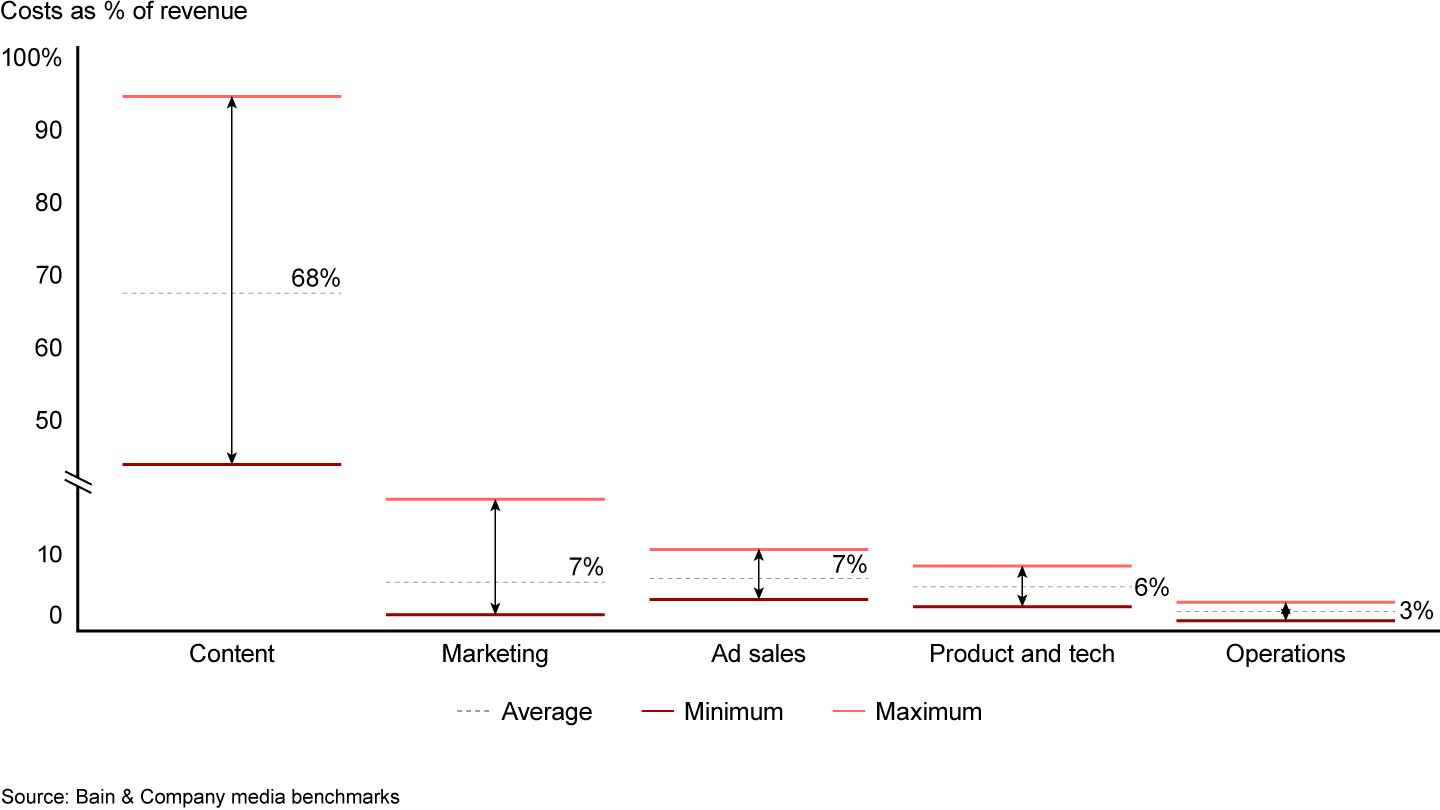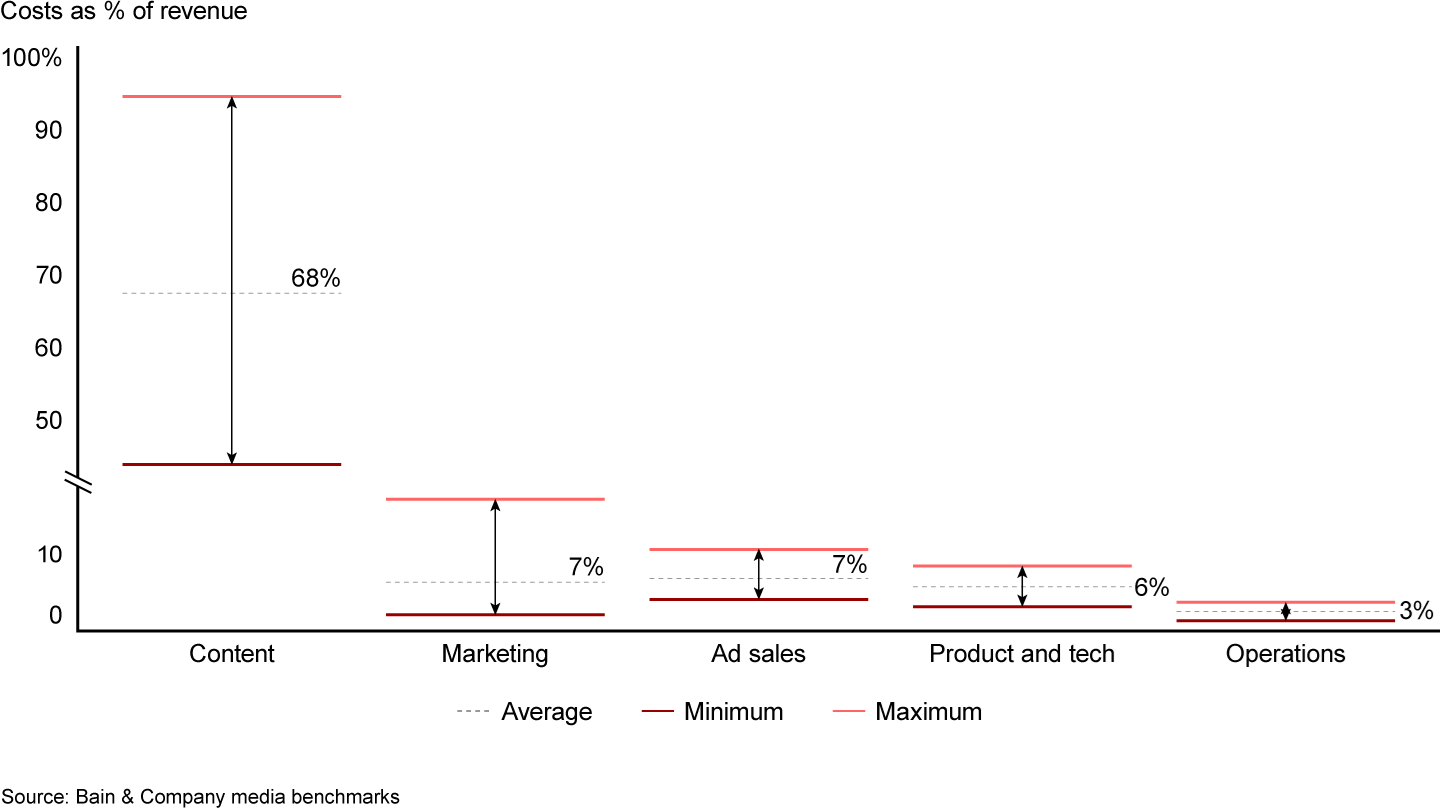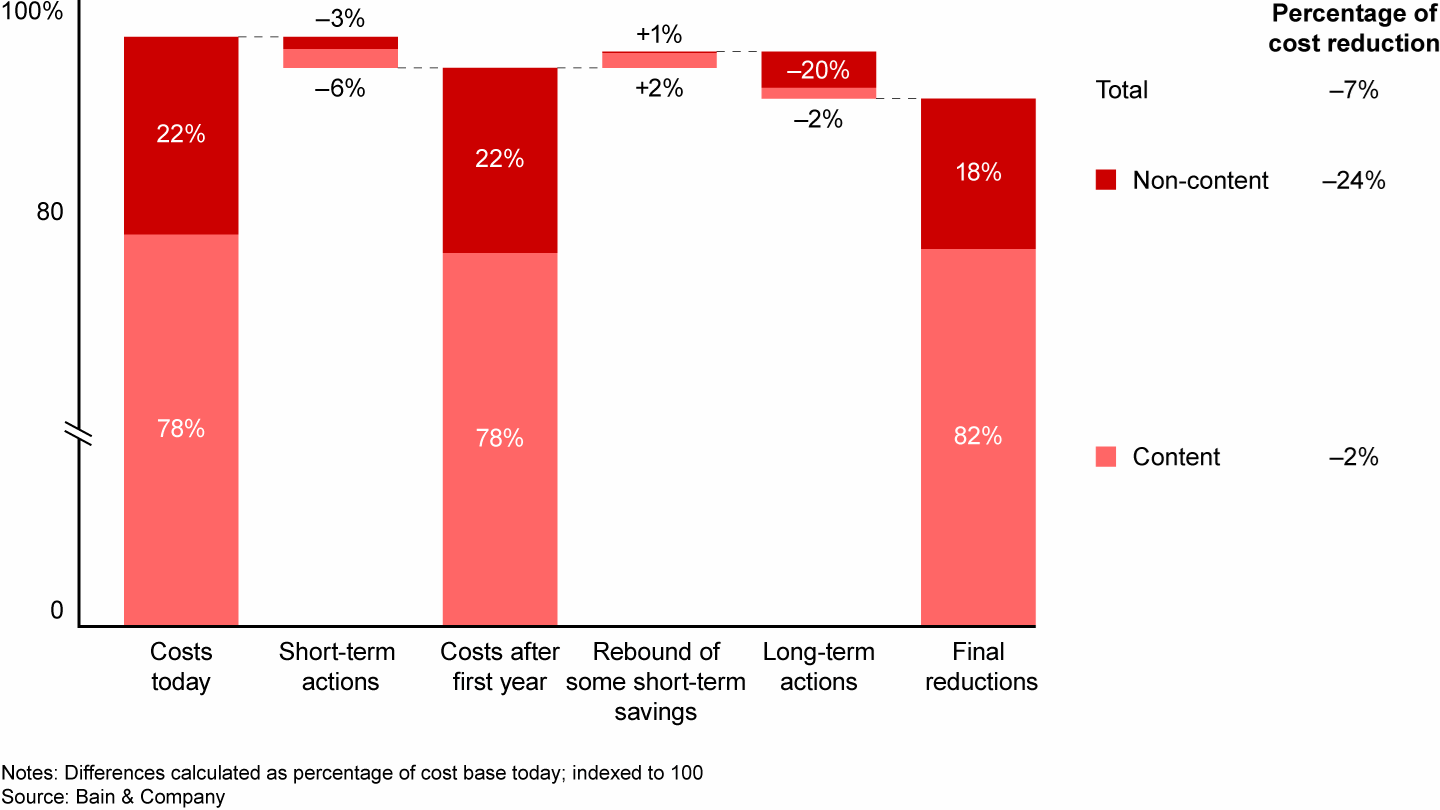Brief

At a Glance
- The days of profligate spending to win the streaming land grab are a fading memory. Media companies now must spend efficiently to fund their operations.
- Our benchmarks found big differences in how leaders spend compared with the average, suggesting lots of room for improvement.
- Short-term measures like resetting production values and budgets help build momentum, while long-term measures ensure continual gains in productivity.
- Cost efficiency will create the budget room necessary to fund great content and to remain an essential line item in consumers’ media budgets.
As the streaming video market matures and subscriber growth slows, incumbents and newcomers are confronting a market that’s less forgiving than the one they have enjoyed until recently. The initial streaming land grab is winding down, while inflationary pressures are squeezing consumers’ disposable incomes and advertisers’ budgets alike.
And yet, competitive intensity in the industry shows no sign of cooling, with TV incumbents and streamers fighting their way to the top of the consumer media stack.
How can media companies free up the capital they need as they compete for consumer attention? Incumbent broadcasters need to fund a faster migration to non-linear models, building up inventory and recapturing younger audiences before on-demand and ad-supported streamers capture the lion’s share of growth. And streamers are not immune to this race for efficiency: They need to win and keep customers with fresh content every month—all while withstanding ever-increasing scrutiny from investors on their prospects for growth and earnings.
The changes underway reflect permanent structural changes in the industry, and financial realignment requires more than just another round of one-shot spending cuts.
Build cost-efficiency muscles
Every media executive knows this won’t be easy: Cost efficiency is not a popular topic in any industry, especially in entertainment. Broadcasters are experienced at managing cyclical markets by adjusting short-term spending, but they rarely face multiyear downturns like the one they find themselves in now. As a result, cost programs are often dismissed as temporary, forgotten at the first sign of advertisers and subscribers returning.
Streamers are also wrestling with cost performance, as many are coming off of several years of large content investments and being measured mostly on subscriber growth. Most have never had to develop their cost-performance muscles.
For both, there’s a short list of capabilities they can begin building to deliver quick returns while also laying the foundation for long-term value:
- Pursue continuous productivity gains, shifting the goal posts further every year.
- Radically simplify the product portfolio (channels, viewing platforms and apps, and their underlying technology) to save costs across the organization, rather than focusing only on back-office functions.
- Invest in new production technology, including virtual and remote production techniques, studio automation, and AI to assist with pre- and post-production.
- Develop simpler, digital customer journeys and advertising self-service platforms to reduce the cost to sell and the cost to serve, while improving customer experience.
- Communicate clearly to employees and investors that cost performance is here to stay and is a core capability that helps deliver better customer experiences.
Start by identifying savings opportunities
Leaders begin with a fact-based view of opportunities for productivity, assessing improvement potential down to the activity level. The initial fact base helps kick-start the cost-reduction effort, applying the brakes on short-term spending while launching a transformation to gain long-term value.
Bain’s benchmarks suggest that there is a great deal of variance among media companies, leaving room for improvement in most (see Figure 1). They also emphasize that no business or functional area should be overlooked, including technology and content. Administrative functions alone do not represent a large enough share of total costs to provide more than a short-term oxygen bubble. Tackling product-related areas not only improves efficiency but also boosts effectiveness and reduces time to market for new content, products, and advertiser engagement.
Across companies, costs vary widely, suggesting there’s room for improvement in most organizations.


One European TV company was under a strong mandate to reset its cost base and chart its way forward in turbulent times. It developed a two-pronged plan mixing short- and long-term efforts, all aimed at helping it become an integrated leader in advertiser- and subscriber-supported streaming services.
- Short-term actions included resetting production values and budgets across programs, postponing some commissioned content, resizing marketing budgets to focus on new platforms only, and measuring technology investments against potential returns.
- Longer-term transformation strategies included a thorough review of the content portfolio (both sports and drama), augmenting pre- and post-production activities with AI, and simplifying the organization with fewer spans and layers.
Over three years, the plan is expected to reduce costs by as much as 7% (see Figure 2).
A combination of short-term and long-term actions should reduce costs by as much as 7% for one media company


Media leaders that focus on developing their cost-performance muscles will not only deliver better financial results, but also will build capacity to fund differentiated content, take more risks on screen, and shine on the red carpet. In an industry where content remains king, it is an indispensable competitive edge in the battle for audiences.